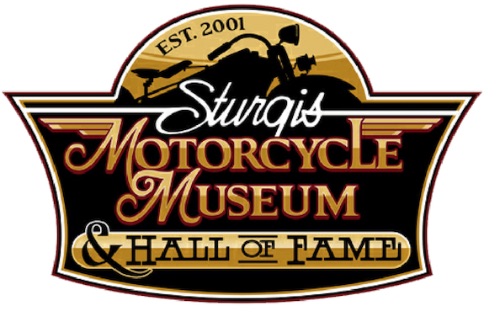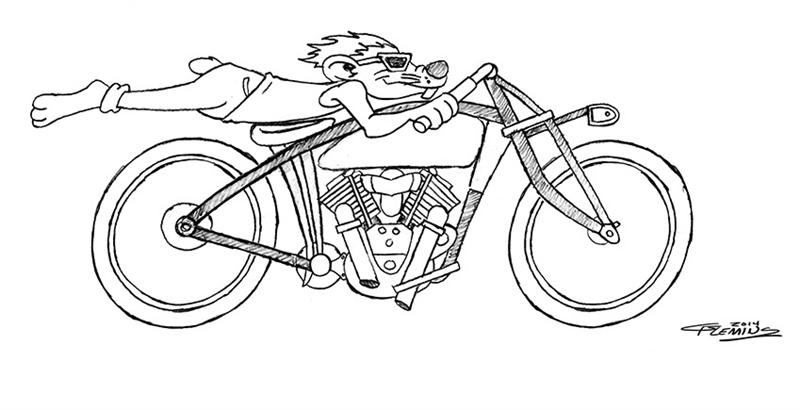
It’s Memorial Day 2023. There’s a jammin’ bike show happening in Deadwood. Dan’s hands are full with Sturgis Museum projects. I’m trying like hell to understand Outlaw Justice, my second book and proof reading each page for reprinting. I’m also building a Knucklehead chop and searching for a 1913 twin engine.

Spring hit the Black Hills like color film smacked photography. Suddenly we’ve gone from 20 degrees to 80 and life is emerald green and brilliant. “I’m not a green guy,” Irish rich said of Charlie’s ’73 Corvette color. I know, that doesn’t make any sense at all…

Cutting to the chase, I’m running behind on this episode because of a myriad of other projects and interruptions. I was able to sneak into the hills over-looking the Buffalo Chip and Dan’s shop recently to grab some shots and kick around the 1914 H-D twin engine rebuild.
It’s amazing how some of these engines survived or weren’t used much. Dan’s waiting on pistons and boring cylinders is critical. How do you bore a cylinder so it’s tighter at the top than the bottom? You got me, but I believe I understand the concept.

Originally, they ran cast-iron Pistons, which don’t swell as much as aluminum pistons, hence the tapered bore. But wait, if you run aluminum pistons, you can bore the cylinders straight and run tighter tolerances. “I don’t have any idea how the factory taper-bored cylinders,” Dan said. He took his cylinders to Lonnie Isam’s shop. Lonnie Sr. has a specific J-model boring table and tooling. Dan honed the freshly bored cylinders and set the piston ring gaps.

Billy Lane told me he’s running Knucklehead pistons in some of his early bikes, but it mean new rods and larger wrist pins. Dan lapped the rods, but the piston pin bushings were fine.

He’s using 741 Indian lower end bearing races and H-D bearings, because the races are readily available from Lonnie or Todd at Jerry Greer’s Indian in Deadwood. Actually 45-flathead military bearings will do the trick and they are available. Dan trued the flywheels and the case bushing on the pinion side was good, amazing and over 108 years old.

The source for many early engine parts is Competition Distributing where his piston pins came from, but there’s an issue. To reproduce parts for early engines is a challenge. How can anyone invest in parts for very low volume engines, say 1000 and 500 are gone. So you stumble into your local casting facility and ask for 100, or even 500 of one part and they laugh you out of the shop…



The cams were all the same for ’14 J-engines. The fast or race engines were juiced with different rocker arm geometry and larger intake manifolds. He’s running a rebuilt Bosch manifold. After WWI the Bosch patents fell into different hands. Some Bosch mags have Germany under the name on the brass tag, others have England or even Made in USA.
Some guys are running standard Joe Hunt or Morris Magnetos attached to an adapter plate.

While in the master’s shop and he wasn’t looking, I took shots of his 1912 single project. Amazing, but this bike will be constructed primarily with re-production parts. The frame came from Dewey Early Harley parts and the bars and front end were manufactured recently in Texas.

There were two models in ’12, the 8-XA which has a clutch on the rear wheel. The 8-A had only the belt tensioner to drive it. Up until 1913 the wheels had only 36 spokes. In ’13 they were changed to 40-spoke wheels. Even the wheels will be new on this puppy. Only the engine will be original. Replacement clutches are available from Sweden.

The tanks came from Antique Moto Smith in Texas, the rims also were made in Texas. Dan laced the wheels and machined the spacers. Look at those tiny rockers from Competition Distributing. Keep in mind, that the new stuff is much more precision than original sand-casted and rough machined components. Even tooling today and of course, CNC machines are very precise compared to old lathes ran by hand.

Next, we will bring you the final install of the newly rebuilt ’14 twin, and maybe a start-up video. I learned that my own ’13 twin racer will not have a clutch, because it will be a crank and ride-off the center-stand to the race. Hang on!



